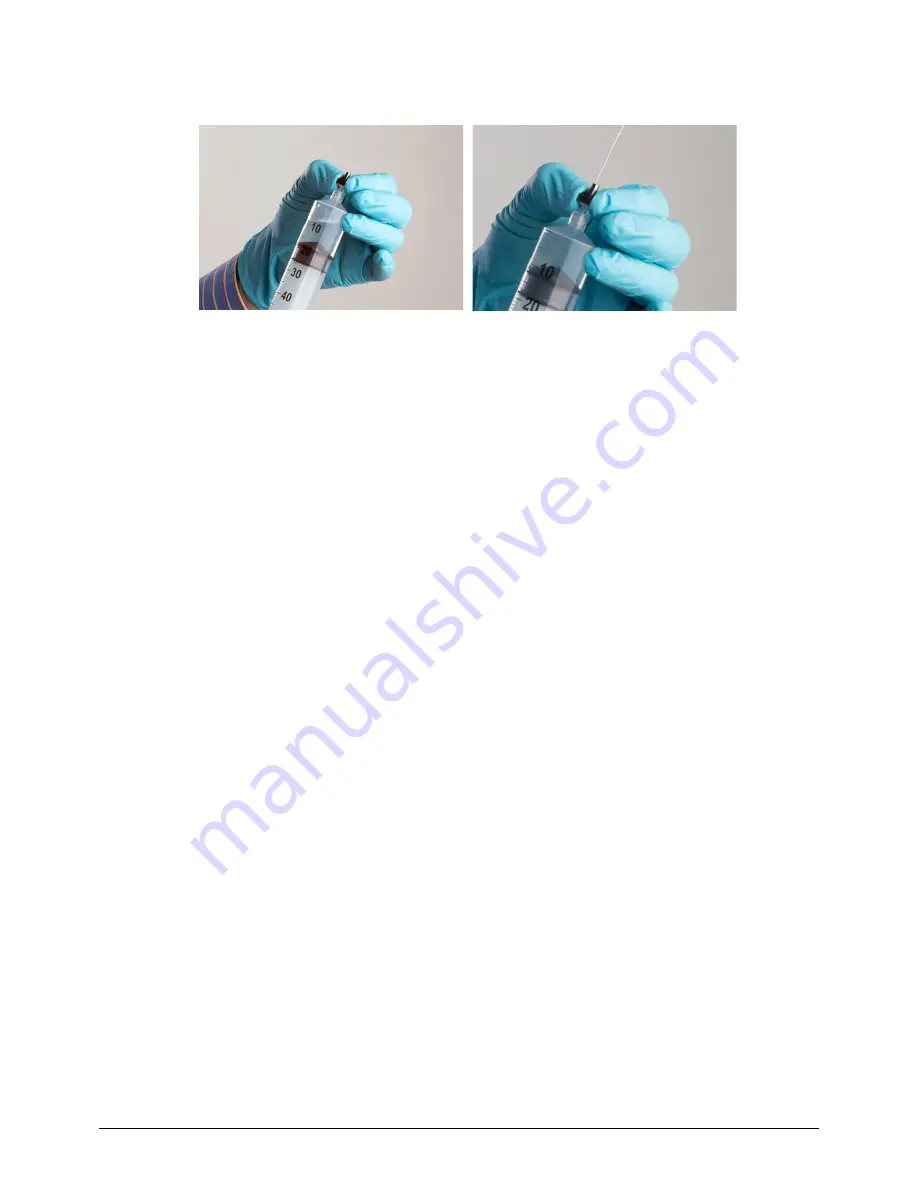
7 Maintenance and repairs
48
B-390
Operation Manual, Version E
Figure 7-1:
Cleaning procedure of the nozzle
–
Take a syringe containing air on top and water on the bottom.
–
Push the air through the nozzle (left figure).
–
Push the water through the nozzle immediately afterwards (right figure).
–
Examine the nozzle tip under a stereoscopic microscope to make sure the passage is
clear and clean.
NOTE
If lipophilic immobilization solutions were used, then use appropriate solvents for cleaning. Do not use
acid solution for alginate, as this would create a precipitate.
7 .4 .2
Cleaning a clogged nozzle
Unscrew the nozzle. Pass air or water through the nozzle as shown in
figure 7-1
.
If the nozzle tip is not clear, soak the nozzle in water, the appropriate solvent, in 1N NaOH or 1N
sulfuric acid (never use HCl) according to the encapsulation mixture for 1 hour at room temperature,
with periodic agitation. Sonication of full stainless steel nozzles is also a helpful procedure. Wear
appropriate protection equipment. Rinse with distilled water, with air and let dry.
Examine the nozzle tip under a stereoscopic microscope to make sure the passage is clear and clean.
NOTE
If lipophilic immobilization solutions were used, then use appropriate solvents for cleaning. Do not use
acid solution for alginate, as this would create a precipitate.
7 .4 .3
Cleaning the bead producing unit
Disassemble the bead producing unit. However the magnet holder should not be disassembled!
Wash all parts, with a mild detergent solution, 0.01N NaOH or 0.01N sulfuric acid (never use HCl) as
appropriate.
Rinse thoroughly with hot water, then with distilled water and let dry.









































